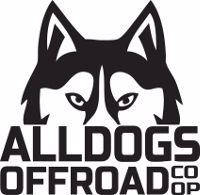
Welcome to Central Appalachian Mountain Overland
The Appalachian's finest Offroad, Overland, and Adventure Family
Leaving The Traction Boards At Home
OPINION
Leaving the Traction Boards at Home
No suburban overlander’s build is complete without the unmistakable hunks of expensive multicolored plastic bolted to the bedside or roof rack of their rig…right?
This topic is almost as inflammatory as asking a tire size or oil question on a well established truck forum. The camps are more steadfast in their beliefs than demonstrators during the 2020 election cycle.
A traction board, or “sand ladder” provides a semi-rigid surface about 3 feet long which allows a stuck driver to attempt self recovery by using the board as a temporary high traction surface. Popularized by beach goers, the traction board has become standard equipment in most overland circles.
Here’s’ why the orange water-wings will never make my equipment list.
1: I’m very unlikely to get stuck in a scenario where a traction board would provide me any benefit. (Sand Excluded) I’m driving a locked, long travel 4×4 on 34” Mud Terrain Tires.
2: Cost – They aren’t necessarily cost prohibitive at 2-300 bucks for a quality set, but for something that would likely not provide me any benefit, its money I don’t need to spend. Rocks and logs are free.
3: Size and storage: I prefer to pack light with minimal gear items. Additionally, after use, the odds of it being caked in mud and dirt are high.
4: Should I be stuck and need a traction board to get moving again, I still have to get out of my truck and walk back to the area where I was stuck to pick the thing up.
Here are some scenarios where I believe a traction boards make sense:
1: You are traveling on sand: Parking on a traction board overnight is a great idea if you’re camping on sand. They’re also great shovels and will prevent a vehicle from sinking if it becomes stuck.
2: Your vehicle has low clearance, small tires, or limited suspension travel: A traction board can successfully be used to give a crossover or other non-4×4 the extra few inches it needs in order to clear an obstacle without causing body damage. Likewise, it can be used to fill in a low spot in the trail if a vehicles suspension cannot safely droop the wheel into it.
3: You have the room and disposable income to bring traction boards for other vehicles who may need them.
4: You simply enjoy bringing everything including the kitchen sink. There are no “rules” in overlanding. If you like them and think they serve a purpose, load em’ up.
A time where a traction board helped? It’s no secret that you will rarely hear me sing praise of traction boards in the woods. With that said, on one class 4 road in Vermont, we did use them successfully.

A Toyota Sequoia on all season tires experienced a near miss where the rear end slid downward into a trench that was approximately chest deep. Falling into the trench would have meant a rollover. We began stacking rocks and winching the vehicle up out of the trench with a snatch block to redirect the line of pull. When the vehicle was in a safe position, we attempted forward progress, but the rear end started to slide again. On the downhill side, we began to bridge traction boards on the rear tire until the mud packed tires were on level ground. Could this have been safely completed without the traction boards? Yes, we could have reset the winch and snatch block and walked the rear end down the trail, but that would have been much more difficult and time consuming.
As with all modifications and pieces of equipment, assess your vehicle’s capabilities, your terrain, and your skillset what is unnecessary for some may be critical for another and vise-versa.










